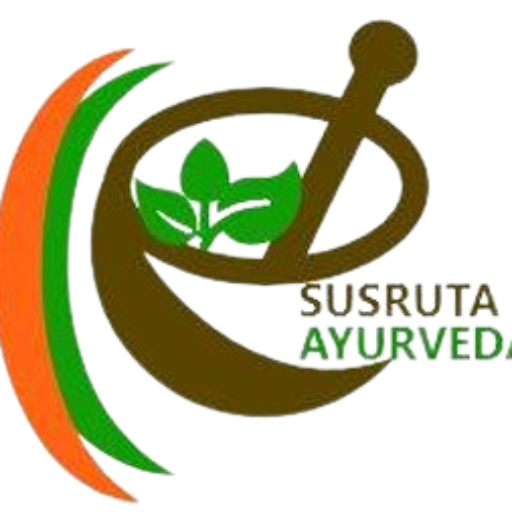Acne/Yauvanpidika stands for eruptions that occur on the face of a young known as Yuvanpidika. Occasionally it can appear on the upper chest and back Sometimes it may appear on the upper chest & back but generally, it manifests on facial skin only and this might be the reason that word Mukhdushika has been used as a synonym of Yauvanpidika at many places.
Yauvanpidika consist of two words i.e., Yauvan + Pidika
Yauvan- Derived from the root word ‘Yu with suffix ‘Ann’ which stands for youth/young individual
Pidika- circular swelling like Pinda (papule, pustule, nodule, etc.) is called Pidika.
Vernacular Name: –
- Sanskrit – Yauvan Pitika, Mukh-Dushika, Tarunya Pidika.
- Hindi – Keel, Muhanse.
- English – Pimples.
- Latin – Acne, Acne Vulgaris.
- Gujarati – Khila.
- Punjabi – Keel.
Nidana Panchak:
As per Ayurveda Vata, Pitta & Kapha, collectively control the healthy and diseased state of the body. Their equilibrium pretends to a healthy state while in the disturbed state leads to any disease or disorders. The pathological cycle is well explained by Acharya Sushruta in six stages as Shhat Kriyakala’. The Nidana Panchaka is nothing but a full horoscope of a disease.
Causative factors/Nidana:
Nidan-Panchak of Yuvanpidika is very briefly given in Ayurveda. Mainly disturbed Kapha, Vata, Rakta Doshas are considered as a major cause of Yuvanpidika. Acharya Charak also included Pitta Dosha along with the above-mentioned Doshas.
- As per Ayurved’s point of view, there is a Medogarbhta (Medo Dhatu inside the Acne) so disturbance of Meda Dhatu can also be a causative factor.
- Occurrence of acne to appear in young age group, Vulnerable age group can also be a cause.
- Secretion of some hormones or enzymes like androgen, testosterone starts to secret during this age which leads to making this change on the face.
- As Acharya Sharangdhara has said stickiness over face (Vaktre Snighta) skin and formation of boil (Pidikottpati), as Mala (waste product) of Shukra Dhatu which also support by above paragraph that during above said age Shukra Dhatu starts to appear.
| Aharaj / Dietary factors | Viharaj / Lifestyle or behavioral factors | Mansika/ Mental factors |
| Madhur, Amla, Lavan | Bhuktavadivaswap (Sleeping just after food intake) | Krodh (Excessive anger) |
| Katu, Kashay, Kshara (Excessive intake of sweet, sour, salty diet) | Chardivegapratirodh (holding the urge of vomiting) | Bhaya (Excessive fear/scared) |
| Ushna, Tikshna, Vidahi (intake of hot, spicy or burning causing food articles | Adhik Shrama (excessive physical work) | Shoka (Excessively sad) |
| Laghu, Ruksha, Shita (intake of dry, light, and cold food articles | Vyavay (excessive indulgence in sexual activity) | |
| Pichhchhila, Abhishyandi (intake of slimy or heavy food) | Atijagaran (Night wakening) | |
| Pinyak, Kulttha, Masha, Nishpav | Atiraktasravan | |
| Takra (butter milk), Dadhi (Curd) (Amla), Mastu, Sukta | Atilanghana (Excessive skipping of food/fasting) | |
| Tila, Sauvirak ,Haritvarga | Vegadharan (holding of natural urges) | |
| Ajirna (Indigestion), Adhyashana (overeating), Viruddhasan (faulty eating) | ||
| Abhighat (trauma) |
Purvaroopa/ premonitory signs:
For Yauvanpidika, no specific premonitory signs and symptoms are mentioned however mild stickiness and irritation in form of Alpattvatahetu evam Lakshana may be regarded as Purvarupa.
Roopa/Signs and symptoms:
The main signs and symptoms that occur in the associated form of Acne are –
- Kandu (Itching)
- Daha (Burning)
- Paka (Suppuration)
- Shoth (inflammation)
- Vaivarnyata (Discolouration)
Treatment /Chikitsa for Acne:
Acne is treatment by means of internal medical as well as external topical application of medicaments.
- Internal– Oral intake of Raaktashodhak medicines like Manjisthadi Kwath, Lodhra churna, Neem Churna, kesor guggul, Gandhak Rasayan
- External – Application of Mukhalepas/ face pack of drugs like Turmeric, Lodhra, Neem or Kumkumadi Taila
- Therapies – Vaman, Virechna, Nasya, Leech therapy etc.
For more information contact nearby Ayurveda Practitioners or book an appointment with experts linked with SusrutaAyurvda by clicking on ” Consult a Docter”
Refrences
- 9th ed. Varanasi: Chaukhambha Orientalia; 2007. Sushruta, Sushruta Samhita, Nidana sthana 13/39, Edited by Vaidya. Yadavji Trikamji Acharya.
- 11th ed. Varanasi: Chaukhambha Sanskrit Bhavan; 2007. Bhavamishra, Bhavaprakasha, Part 2 Madhyama khand 61/31, edited by Shri Brahmashankar Mishra & Shri Rupalal Vaishya.
- Varanasi: Chaukhambha Surabharti Prakashan; 1999. Sharangadhara, Sharangadhara Samhita Uttarakhanda, 11/15, edited by Dr. Brahmanand Tripathi.
- 4th ed. Varanasi: Chaukhambha Surabharati Publications; 1994. Agnivesha, Charak, Dridhabala, Charaka Samhita, Vimana sthana, 8/122, edited by Vd. Yadavaji Trikamaji Acharya.
- Champion RH. Burns DA. Disorders of the Sebaceous Glands. In: Burton JL, editor; Textbook of Dermatology. 6th ed. UK: Blackwell Science Ltd; 1998. p. 1717.
- 9th ed. Varanasi: Chaukhambha Orientalia; 2007. Sushruta, Sushruta Samhita, Sutra sthana, 46/525, Edited by Vaidya. Yadavji Trikamji Acharya.




he blog was how do i say it… relevant, finally something that helped me. Thanks
[…] Acne Fears Conquered: An Ayurvedic Approach […]
[…] Feature:Are You Afraid of Acene?: An Overview in Ayurveda […]